
..........................
You’ve stepped on it, ignored it, and tried to eradicate it from your lawn. However, this innocuous little weed is one of the most useful medicines on the planet, just begging to be harvested.
There are two major types of plantain in BC, Canada: Lance and Broadleaf. Generally, all 200-plus varieties of plantain yield the same results. It grows especially well in poor, rocky soil (such as driveways) and is often seen alongside dandelion. More often than not, you will see plantain growing in gravel pits and construction sites as nature seeks to regenerate the soil. Introduced to North America in the 1600s, it was once called “White Man’s Foot” by the Native Americans who witnessed that where the Europeans tread and disrupted the soil, plantain sprung up.

Plantain has often been the go-to remedy for hikers plagued by mosquitos. Because it draws toxins from the body with its astringent nature, plantain may be crushed (or chewed) and placed as a poultice directly over the site of bee stings, bug bites, acne, slivers, glass splinters, or rashes. Bandage the area and allow the plantain to work its magic for 4-12 hours. Plantain may also be used to create a balm for emergency kits, or an infusion used as a skin or general wash. It is also a notable, soothing remedy for hemorrhoids.
Plantain is renowned for its healing effect on the digestive system. This is especially useful for anyone who has been damaged by antibiotics, anti-inflammatory or pain medications, food allergies, or Celiac disease. Both leaves and seeds specifically target the digestive system for healing. The leaves may be steeped as tea, added to soups, or dried with a sauce similar to kale chips. The seeds – a type of psyllium – can be ground or soaked for bulk mucilage or absorbable fibre, which, consumed before meals, may help with weight loss.
Because plantain is a gentle expectorant and high in silica, an infusion can be helpful for lung problems, coughs, and colds.
Plantain is almost a panacea for the human body, treating everything from all menstrual difficulties, all digestive issues, to nearly all skin complaints, and even arthritis. Add to salads, chew to ease thirst, or enjoy in stir fries. This versatile wild vegetable will keep you in good health for years to come!
Ribwort Plantain and Greater Plantain
Plantago lanceolata and Plantago major
Folk names: Way bread, Lord of the ways, Wodan’s Herb, Slan-lus (plant of healing)
The flower heads of ribwort are used as ammunition by children and adults alike.
A very common wild plant, it likes to grow on compacted soil and is always found around human habitation. It grows abundantly on tracks and by foot paths hence it’s title of “Lord of the Ways” and “Way Bread”.
It is resilient and resistant in its character.
A very common wild plant, it likes to grow on compacted soil and is always found around human habitation. It grows abundantly on tracks and by foot paths hence it’s title of “Lord of the Ways” and “Way Bread”.
It is resilient and resistant in its character.
Edibility
The youngest leaves are nibbled raw, teenage leaves can be cooked in 15 minutes, but once older they can become bitter and fibrous.
Seeds of the greater plantain can be dried and added to salads or into bread. They can be ground into a low-grade flour and mixed with other flours (although this we have never tried).
The fresh seeds of both species make a very good protein nibble, tasting rather like mushrooms
Seeds of the greater plantain can be dried and added to salads or into bread. They can be ground into a low-grade flour and mixed with other flours (although this we have never tried).
The fresh seeds of both species make a very good protein nibble, tasting rather like mushrooms
Medicine.
Plantain is a fantastic remedy for all kinds of bites and stings, and as good as, if not better than, dock leaves for nettle rash. Apply crushed fresh leaves directly to affected area, and eat a little of the fresh leaves or drink a cup of plantain tea as well. Do both every hour or so for maximum benefit.
Both types of plantain are great wound herbs for cuts, grazes and bruises. It is effective both to help stop bleeding of fresh wounds, and to draw out infection from older wounds.
An easy way to use Plantain while on the move is to pick it, chew it, apply it to the infected/bleeding area and secure it with a whole leaf (perhaps dock, burdock or greater plantain) or clean cotton dressing and something to tie it in place (long grass, bark). Change the herb and dressing regularly and especially if the whole thing gets wet.
Both types of plantain are great wound herbs for cuts, grazes and bruises. It is effective both to help stop bleeding of fresh wounds, and to draw out infection from older wounds.
An easy way to use Plantain while on the move is to pick it, chew it, apply it to the infected/bleeding area and secure it with a whole leaf (perhaps dock, burdock or greater plantain) or clean cotton dressing and something to tie it in place (long grass, bark). Change the herb and dressing regularly and especially if the whole thing gets wet.
So it’s a herb for the skin and this means the internal skin as well as that on the outside.
The leaf used internally as a food or tea helps the lining of the lungs, stomach, intestines, bladder and all in between.
It is cooling,
soothing,
softening,
toning,
healing,
soothing,
softening,
toning,
healing,
with a mild antibacterial action that can be useful for coughs (esp. the ribwort), sore throats and stomach upsets.
It is commonly an ingredient in herbal hayfever and asthma prescriptions.
The seed heads can be used as a very gentle bulk laxative (combine with Chickweed).
Plantain lotion was a famous Gypsy “Cure All”, good medicine and good income for the traveling folk.
It is commonly an ingredient in herbal hayfever and asthma prescriptions.
The seed heads can be used as a very gentle bulk laxative (combine with Chickweed).
Plantain lotion was a famous Gypsy “Cure All”, good medicine and good income for the traveling folk.
It was also used as a saxon remedy for headache – tied to the head with red wool.
In Guernsey the leaves were chopped and mixed with egg white to soothe burns.
On one occasion in Cornwall we decided to walk through the day and night, from Lostwithiel to Peranuthnoe (nearly 50 miles). We arrived in Truro in the evening, having covered half the distance, with tired feet and aching limbs. No matter how good your boots, after about thirty miles the feet tend to heat up and rub in unexpected places. To cool our aggravated tootsies we picked Greater Plantain (the wider leafed species) and lined our socks with it. The cooling was instant, keeping the threat of blisters at bay for a while. We soon learnt to remove the ribs of the leaf to prevent rubbing.
“Planta” means foot in Latin, and the leaves help feet, look like feet and grow where feet commonly tread.
Known as “Englishmans’ foot” by the native Americans and others, so called because the plant sprouts wherever the English colonial forces set foot.
Known as “Englishmans’ foot” by the native Americans and others, so called because the plant sprouts wherever the English colonial forces set foot.
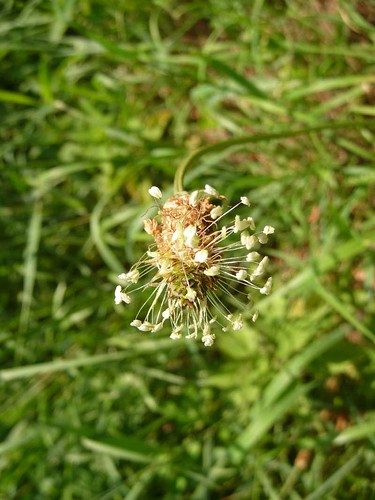
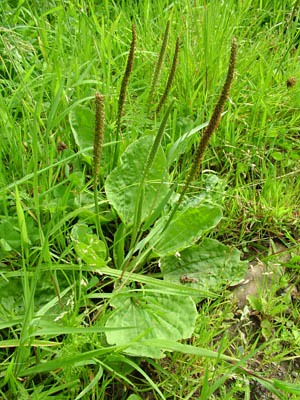
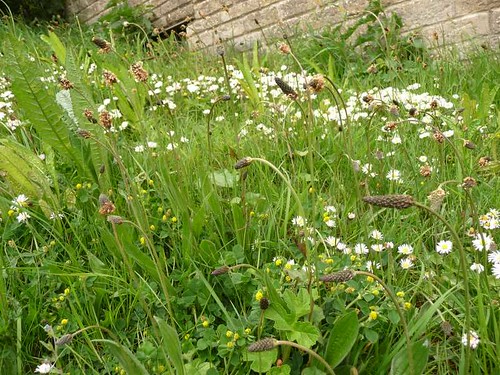
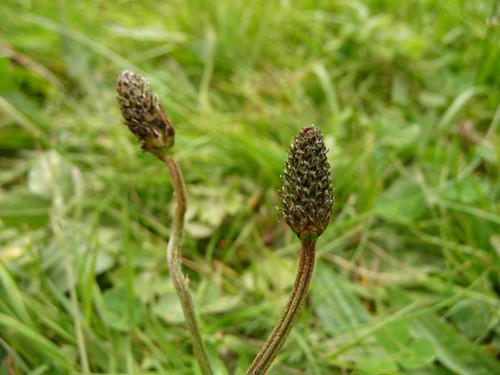
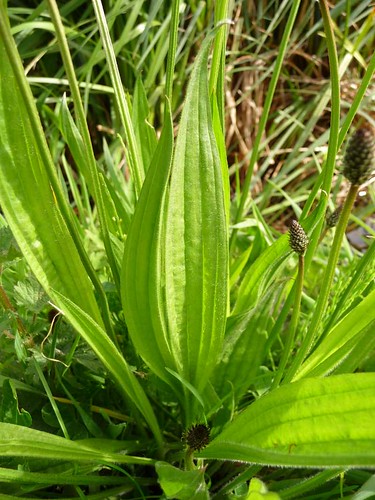
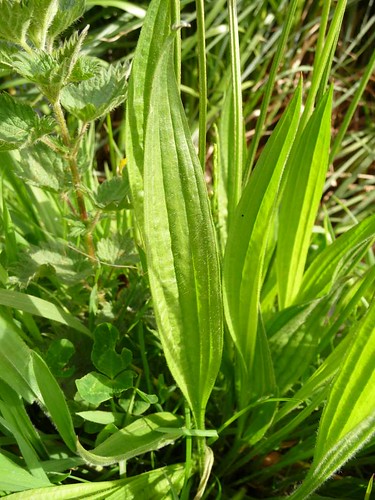
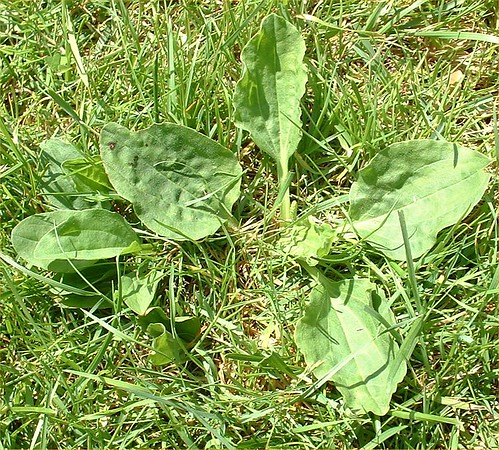
No comments:
Post a Comment